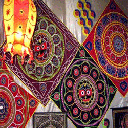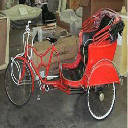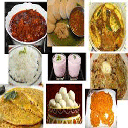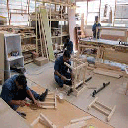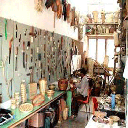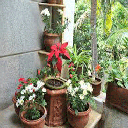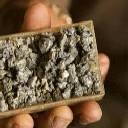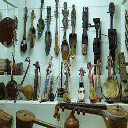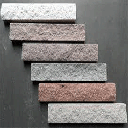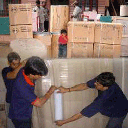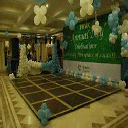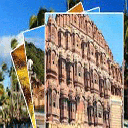Karnataka is located in the western half of the Deccan plateau surrounded by Andhra Pradesh in the east, Maharashtra in the north and Tamil Nadu and Kerala to the south. Physiograpically, the state forms a part of two well defined macro regions of Indian Union; the Deccan Plateau and the Coastal plains and Islands. The State has four physiographic regions viz. Northern Karnataka Plateau, Central Karnataka Plateau, Southern Karnataka Plateau and Karnataka Coastal Region. Karnataka enjoys a salubrious climate throughout the year. The state like all other states of the country experiences typical tropical climate comprising of three distinct seasons. The chief attraction is the city Bangalore itself. Bangalore is sometime called as “The Air-Conditioned City of the Countryâ€.The state receives its annual quota of rainfall during the winter and summer monsoons. The tropical monsoon climate continues from June to September which covers the entire coastal belt and its adjoining areas. The climate gets little humid during the months of April and May. The monsoon starts at the beginning of May and continues for 3-4 months. Due to its tropical climate the state experiences heat waves during April/May and extensive rainfall during June to August. The winters are not too cold but pleasant enough. Forests: Karnataka’s forests reserves account only 20 % of the total geographical area of the state. These forests are classified as reserved (28.611 sq. km) protected (3,932 sq. km), unclosed (5,748 sq. km), village (124 sq. km) and private (309 sq. km) forests. Karnataka is known for its valuable timbers from the evergreen forests in the Western Ghat region, notably Teak and Rosewood which are used in decorating interiors of the homes. Rivers:Karnataka accounts for a significant percentage of the country's surface water resources i.e. nearly 6% (17 Lakh million cubic meters). About 40 percent of this is available in the east flowing rivers and the remaining from the west flowing rivers. There are seven river basins in Karnataka, formed by the Krishna, Cauvery, Godavari, West flowing rivers, North Pennar, South Pennar & Palar. Minerals:Karnataka is blessed with rich mineral resources distributed more or less evenly in the whole territory. The state is the major producer of gold in the country with the two major mines located in the districts of Kolar and Raichur. The gold mines at Kolar and Hutti are producing about 3,000 kg of gold, about 84% of countries production per annum. Karnataka also has very rich deposits of Iron and Manganese ores. The total reserve of high grade iron ore available in the State are of the order of 1,000 Million tones.The State is endowed with rich deposits of asbestos, bauxite, chromite, dolomite, gold, iron ore, kaolin, limestone, magnesite, Manganese, ochre, quartz and silica sand. It is also the sole producer of felsite, moulding sand (63%) and fuchsite quartzite (57%). Karnataka has also the fame of having standard Ornamental Granites with different hues. It has granite rock's spread over 4200 Sq. kms. The forested area of south Karnataka gives the sandal wood resource to the state. Maize is grown only in the northern tip of the state in Bidar District. Coconut and Arecanut is grown in the southern districts. Cotton is grown in abundance in the Gulbarga District. The Davangere District of the state is a center of cotton industry. The weather conditions in coastal areas make cultivation of fruit orchards favourable. Rice is grown mostly in the coastal districts. The state ranks fifth in the country in the production of oilseed. Karnataka has become one of the country’s global economic players owing to its various industries in the field of electronics, software, biotechnology and other small and medium scale industries. The capital city Bangalore (now called Bengaluru) is the silicon valley of India. Most of the global IT companies have their branches in Bangalore. Bangalore, the IT capital of India accounts for approximately 38% of India's software exports which amounted to revenues of about $9 billion in 2006. The software industry is expected to generate US $20 billion by 2010. Fairs and Festivals of Karnataka:With several ancient temples and rich cultural heritage, Karnataka cselebrates various colorful temples. Having a multi-religious population, many festivals are celebrated here. Karnataka Festival Dussehra:Dusshera is the main Hindu festival of Karnataka. This ten days festival was celebrated with extravagance by the rulers of Vijayanagar Empire. Later, this became a tradition. The festival was celebrated at Mysore where a Durbar was held for 9 days and on the 10th day a huge procession was taken out with decorated elephants, colorful folks and much more. It is still celebrated in Mysore with great pomp and show. Yugadi:Yugadi is considered as the New Year's Day in Kannada tradition. It falls on the late March or early April and is celebrated all over Karnataka. On this day the dinner is specially prepared and it starts with jaggery and neem leaves. This depicts that life is nothing but a bundle of joys and sorrows. Karaga:This festival is mainly celebrated at the Darmaraya Temple in Bangalore. It is celebrated on the full moon day of Chaitra, the first month of Hindu Calendar. This festival is celebrated in the honor of Draupathi, the spouse of Pandavas, famous religious characters from the great Hindu epic, Mahabharata. Other Hindu Festivals Some of the other Hindu festivals that are celebrated in Karanataka along with the rest of the country are Makara Samkramana, Sri Ramanavami, Sri Krishna Janmashtami, Ganesh Chaturthi and Deepavali. State Festivals Rajyotsava Day:The Rajyotsava Day is celebrated on the 1st of November every year. This day marks the formation of the Karnataka State. Apart from this, other state festivals celebrated here are the Coorg festival, Hampi/Vijayanagar festival and the Hoysala festival. These festivals celebrate the rich cultural heritage of Karnataka. Other Religious Festivals FestivalKarnataka has a multi-religious population. Thus, festivals of all religions are celebrated here. Some of the Muslims festivals celebrated here are Eid-ul-Fitr, Eid-ul-Adha, Milad-un-Nabi and Moharrum. Christians residing in the state celebrate festivals like Christmas, Easter, Good Friday etc along with the rest of the nation. Buddhist and Jain festivals like Buddha Poornima and Mahaveera Jayanthi are also celebrated in certain regions of the State. Fairs Sri Vithappa Fair:This fair is held in the honour of Vithappa, the deity of the village, Vithappa. It is a three days festival and about 7 to 8 thousand people gather during the fair. This fair has a religious and folk importance. The Godachi Fair:The Godachi fair is held at Godachi village in Ramdurg Taluk of Karnataka. It is held in the month of Kartik This fair is held in the honour of Shri Veerabhadra and it is organized by the government of Karnataka. Shri Yellamma Devi Fair:Shri Yellamma Devi fair is held at Saundatti. It is held for about 5 times between October and February. But the Margasira is the biggest one, which is held on the full moon day. Banashankari Devi Fair:The Banashankari Devi fair is held near Badami. It is an annual fair held in the month of January on the full moon day. This fair lasts for 10 to 12 days. At the fair, villagers buy agricultural items, utensils and other articles of domestic needs. There are 481 degree colleges affiliated with one of the universities in the state, viz. Bangalore University, Gulbarga University, Karnatak University, Kuvempu University, Mangalore University and Mysore University. In 1998, the engineering colleges in the state were brought under the newly formed Visvesvaraya Technological University headquartered at Belgaum, whereas the medical colleges are run under the jurisdiction of the Rajiv Gandhi University of Health Sciences. Some of these baccalaureate colleges are accredited with the status of a deemed university. There are 186 engineering, 39 medical and 41 dental colleges in the state.Udupi, Sringeri, Gokarna and Melkote are well-known places of Sanskrit and Vedic learning. An Indian Institute of Technology Muddenahalli has been approved by the central government as part of the 11th 5 year plan. This will be the first IIT in Karnataka State. In addition, a 600 crore Visvesvaraya Institute of Advanced Technology (VIAT) is being constructed in Muddenahalli-Kanivenarayanapura.
Afzal Khan's Cenotaph: Situated in Bijapur is the marvellous cenotaph of Afzal Khan. It is supposed that Afzal Khan started the construction of his own tomb in his lifetime.But eventually he could not be obscured there. Close by, on a large masonry platform are eleven rows of graves adding upto sixty-four, where his wives lay buried.Near the graves is an old well in which they are said to have met their tragic end. One of his wives, however, managed to escape and hence there is one empty grave. Location : Ashtur, Karnataka,Belongs To , Bahamani Kings,Number of Tombs : Eight The Bahamani Tombs: situated at Ashtur in Bidar, accessible by a road opposite the general hospital and through the Dulhan Gateway leads to the eight Bahamani tombs at Ashtur.The interior has well-preserved paintings. On the outside are high-quality carvings in granite with the walls decorations are in gold and various other colours and are a good example of medieval Muslim art."Tomb of Ahmed Shah-al-Wali Bahamani"Ahmad Shah, a liberal ruler was the ninth king and ruled for 13 years. The tallness of the tomb is 107' and 9" and it is built on a square plan, each side measuring 77' and 1'. The artistic device of giving a white outline to make subjects more prominent has been employed here. Most of the inscriptions are texts of Sufi doctrines and the workmanship is of Persian artisans. Tomb of Sultana Ahmed Shah's wife is much smaller. Traces of paintings are just visible. Tomb of Ahmed Shah's sons to the south of Ahmed Shah's Tomb are rather ordinary."Tomb of Sultan Allauddin Shah II"Allauddin was a refined prince who built his tomb during his lifetime. When completed it must have glittered like a gem with all its outer walls covered with tile work, remnants of which can still be seen. The flat appearance of the walls is livened up by carved black stone margins enclosing the decorations in tiles. The original paintings in the interior have vanished and the dimensions are almost the same as those of the tomb of Ahmed Shah."Tomb of Sultan Himayun"According to local belief as Humayun was a unkind ruler, lightening struck his tomb and the dome is till this day split open. This cross section of the building should interest architects as the construction styles are dissimilar from those of the other tombs. Specimens of the 'spongy bricks' used may be seen. Bidar Fort: It is 110 km north-west of Hyderabad, 40 km north-east of Gulbarga. Described by historian Simon Digby as a sensational stone fort built on a natural bluff rising from the plain. Bidar was the capital of the Bahmani kingdom from 1428 to 1489.It was besieged by Aurangazeb in 1656 and remained under a sequence of Mughal governors until 1724 when it was swallowed up by the Nizams.The tombs on the plains outside the town are magnificient. The inner fort, mostly built by Mohammad Shah (1482-1518), is entered through a massive double gateway.Beyond lies a complete fort. Inside the entrance on the left is the Rangin Mahal whose rooms are exquisitely bedecked with colored tiles, inlaid with mother of pearl. Gagan Mahal: situated in Bidar is a previous palace of Dakamanis and is reached from behind the Masjid. Built by Ali Adil Shah I around 1561 to serve the dual use of a royal residence and a durbar hall. The entrance to the outer court has a four-centered arch reminding one of Tudor structural design.The well balanced halls and courts and the richly decorated niches with carvings etc., show but little of their past splendor when the king himself was a visitor here. From the rear of the double hall, the ladies of the harem could watch the animal fights held in the moat below. Not uncommonly, the animals feasted on persons who were thrown to them by the king's orders.The State Government Museum: in Bangalore is one of the oldest museums of India established in 1866 AD. Specimens of works of antiquity and ancient art, such as sculpture coins and inscriptions found in different parts of Karnataka have been kept for display.Water colour paintings, Plaster of Paris works and other works of art of the famous artist Venkatappa and some contemporary artists are on display.There is a separate sector for the wooden sculptures of Major Cheppudira Ponnappa Rajaram. Attached to the Art Gallery is an demonstration of his works of art. Jamalabad Fort: is well-known for its fort built by Tipu Sultan, the Tiger of Mysore in 1794. The fort was renamed after his mother Jamalbee. The village, which lies at the bottom of a high rock, forms a fraction of the Kudremukh range of hills near Belthangadi.The fort was formerly known by the name, 'Narasimha Hangadi' The town is at the fort of a high rock forming the business of a long span from Kudremukh.The fort was captured by the British, in 1799 AD. The ruin of the rock on which the fort stands is unreachable except by one narrow path, only between Feb and May.Nearby is Gangamoola in the Samse taluk of Chikamaglur district, surrounded by thick forests. Three important rivers, the Tunga, Bhadra and Nethravathi have origin here. Madikere Fort: the 19th century Madikere Fort was once the scene of many a fierce battle. Today, it houses a temple, a chapel, the prison and a small museum. The fort Offers a panoramic view Madikere from its walls. Nearby is the Raja's Seat, which according to legend, the kings of Kodagu spent their evenings here, enjoying the spectacular sunsets from the top of a hill.The Omkareshwara Temple, dedicated to Lord Shiva and built in 1820 AD is a combine of Islamic and Gothic styles of structural design. Mysore Palace: Designed by a famous English architect, the Saracenic style Mysore Palace was built in place of an existing palace that was burnt down in 1897. The enchanting Mysore Palace represents a fine blend of Hindu and Muslim architectural styles. The entire palace is tastefully designed and built with massive gray granite stones, colourful gemstones, paintings etc. The palace also houses a museum with a rich collection of musical instruments, children's toys, many paintings, costumes and weapons belonging to the Maharaja's family. When illuminated with 97,000 bulbs, the Mysore Palace appears like shimmering against an inky black night and this enduring sight of the palace makes every one spellbound note:This profusely decorated and gilded palace is illuminated every Sundays and on holidays. Rail Museum:Located behind the railway station is the little-known but impressive Rail Museum with its priceless locomotives, coaches and collection of paintings and photographs narrating the 'Rail Story.' The prize exhibit of the museum is the Maharani's Saloon built in the U.K Set up in 1979, the Museum boasts of valuable collection of antiquities and sets a good pattern for regional display.A circular gallery called Chamundi Gallery has exciting collections of photographs, series of paintings showing the development of the Railways and signaling signs right from its inception.The adjacent building named Sri Ranga Pavilion houses two Royal coaches that formed part of the Royal train of Maharaja of Mysore reflecting the era of bygone splendor.This pavilion incorporates in its construction beautifully carved wooden pillars, doors and balustrades from the old Srirangapatna Railway Station.It is said that these carved wooden works came from the wooden royal palace of Mysore , destroyed in a fire accident. The saloon used by the Maharajas is now at the National Railway Museum at Delhi.Mysore Rail Museum has the Maharanis' saloon, kitchen and dining care unit. The eight wheeler Maharanis' saloon was built at Mysore Railway workshop in 1899 AD adjustable to both the broad gauge and meter gauge. The Takht Mahal:Is located in Bidar, past the Diwan-E-Am. Now in ruins, it was the royal palace where the kings once lived. Entrance to it can be had from either the northern side or through the small doorway near the fallen archway.The buildings here were the most splendid and a look at the arch still preserved at the site where it had collapsed gives an idea of the height and width of the dome over the royal apartments. The poets of the time sing of domes in blue and how the entire palace would appear to have been covered with encaustic tiles.Behind the audience hall to the south was the room directly under the big dome and this is fabulously decorated. The sculptured frames fitted to alcoves are pleasing to the eye. To the west of this room is an open bath or swimming pool.Beyond this, to the western side were the personal apartments of the royal family. The end room on this side has traces of paintings on the wall and its dome has long since disappeared.The Eastern and the northern facades of this room were brilliantly done in tile work and may be seen even now fresh and gleaming. On the eastern facade is the royal insignia-tiger, with rising sun at the back-worked out in tiles. At the southern end is the hot water swimming pool.A breathtaking view can be had of the low lands and the western fortifications from the windows of the royal apartments.One of the sections displays various small items relating to the then Mysore State Railway including the telephone by the late Maharaja of Mysore, Mysore Station Railways clock made in New York, model of the longest bridge in Hassan-Mangalore Railway Projects and the working model of the steam engine.In outdoor exhibits are the various locomotives, coaches and rail motor car. The star attraction of the museum is the battery operated mini train especially for the children. Technical Museum:Adjacent to the Government Museum in Bangalore is the Vishveshwaraya Industrial And Technological Museum, the second of its kind in India.Dedicated to the memory of Sir M. Visveswaraya, the architect of modern Karnataka, the museum provides a brief history of technological development in the country and houses many technical inventions.The museum portrays the application of science and technology in industry and human welfare. An airplane and a steam engine are displayed in its compound. Inside there are five galleries, each dedicated to a particular aspect of technology.You can monitor your voice as you speak, and learn how things are made - from motion pictures to alarms. Seminars, demonstrations, lectures and film shows on scientific subjects are organised periodically. The mobile science exhibition, a special feature of the museum, tours all over the state throughout the year. note:10 AM TO 5.30 PM daily except Monday and notified holidays. Yana Cave:Located amongst the evergreen forest of the Sahyadri Mountains, Yana Caves are 25 kms for Kumta, a small coastal town and 40-km for Sirsi, a commercial centre. One can experience wilder ness in all its holiness and loneliness in this limestone rock dome paradise. Yana is known for its unique rock formations and is a haven for rock climbers.One has to walk several miles on the partially paved road from the highway. The area is known for its majestic mountains, a variety of rock formations, tricking waterfalls and the holy temple.One can go for a simple climb around the rock dome or discover the cave in between the dome. There is also a likelihood of going hiking to Vibhuti Falls and camp overnight in the area.The tallest peak, Bhariraveswara Shikhara stands 120 meters tall whereas Mohini Shikhara is 90 meters from its base. The mighty rocks have been roughened by the vagaries of burning Sun, uncontrolled winds and torrential rains. They are solid composition of black, crystalline limestone. Wild bees have taken right to construct their hives on these rock-shelters. The trek is judicious to tiring. Ananda Mahal or 'Palace Of Delights': was built by Adil Shah in 1589 AD. The two storeyed building which once housed the ladies of the palace has in its precincts today, a gymkhana club, an examination bungalow, several offices and the residential quarters of the assistant commissioner.Like all monuments in Bijapur, this palace also stands for the melodious blend of the past and the present. Bangalore Palace:Built by Wodeyars, the rulers of the erstwhile Mysore Kingdom, the Bangalore Palace is inspired by the Windsor Palace and based on the Tudor style. Spread over an area of about 800 acres, the Bangalore Palace is famous for its elegantly carved wooden interiors.Bangalore Palace, motivated by the Windsor Castle, was built in 1887 AD by Chamaraja Wodeyar in Tudor-style.Position in the Centret of the city, the palace was before surrounded by beautiful gardens in the midst of a vast open area, which has reduced considerably today.This unique edifice gives the feeling of a piece of England's architecture in Bangalore . Largely constructed of wood, the Bangalore Palace is famous for its carving and paintings.Bangalore Palace, Bangalore Palace historical, Bangalore Palace travel, Bangalore Palace tourism, Bangalore PalaceThe structure has fortified towers and its interiors boast of elegant woodcarvings and Tudor-style architecture, complete with Gothic windows, battlements and turrets.An exquisite door panel at the entrance leads to grand settings inside. The interiors have breathtaking floral motifs, cornices, mouldings and relief paintings on its ceiling.It is said that the construction cost of this exquisite palace was just over Rs 1 lakh. The huge 45,000 sq. feet mansion on which the palace stands was originally owned by Reverend Garret.The palace ground, located between Jayamahal and Sadashivanagar areas, has now become the venue for various exhibitions, concerts and cultural programmes. Daria Daulat Bagh Palace:Housing Tipu's Summer Palace, the Daria Daulat Bagh in Bangalore stands testimony to Tipu's love of greenery and open spaces.This was where the battle fatigued Sultan came after his vicious confrontations with the British, to relax in and recuperate his strength in its calm surroundings. The Summer Palace with graceful proportions and arabesque work in rich colors is a fine example of Saracenic achitecture.The wooden pillars supporting the trefoil arches lead to halls with attractive paintings on the walls. Tipu's confrontations at the battlefields are depicted with all the gruesome details in these mural paintings.The palace also houses the Tipu Sultan Museum - the first of its kind in the nation devoted wholly to one person. The Museum has a rare set of coins, paintings and personal belongings of the Sultan. Gulbarga Fort:The fort itself has 15 towers. Gulbarga also has a number of imposing tombs of Bahmani Kings, a shrine to an important Muslim saint and the Sharana Basaveshwara Temple.This town was the Bahmani capital from 1347 until its transfer to Bidar in 1428. Later the kingdom broke up into a number of smaller kingdoms - Bijapur, Bidar, Berar, Ahmednagar and Golconda. The last of these, Golconda, finally fell to Aurangzeb in 1687. Gulbarga's old moated fort is in a much deteriorated state, but it has a number of interesting buildings insideincluding the Jama Masjid, reputed to have been built by a Moorish architect during the late 14th or early 15th century who imitated the great mosque in Cordoba, Spain. The mosque is unique in India, with a huge dome covering the whole area, four smaller ones at the corners,and 75 smaller still all the way around Gol Gumbaz:situated in Bijapur is an astounding engineering feat. Its enormous "Whispering" dome is second in size only to St. Peter's Basilica in Rome.The dome is the second largest in the world, 124 feet in diameter. The dome stands unsupported by pillars. The fantastic acoustical system in the dome carries the faintest whisper around the dome and returns it to the listener nine times. Even the tick of a watch or the rustle of paper can be heard across a distance of 37 m in the whispering gallery. The gallery around the dome provides a fabulous view of the town.The architecture of this building is unique with the four minarets being the four staircases leading to the top dome. The beauty and excellence of this dome must be experienced at least once in a lifetime. The Magnificent Tomb:Gol Gumbaz, Gol Gumbaz historical, Gol Gumbaz travel, Gol Gumbaz tourism, Gol Gumbaz Historical Place, travelIt is the tomb of Mohammed Adil Shah constructed during (1627 -56), the seventh ruler of Adilshahi dynasty. The king himself started the construction of this colossal tomb that took about 20 years to complete.The tomb, with a floor area of 1700 sq.m, 51m in height and 37m diameter with walls 3 m thick, gives a massive appearance. The central dome is the second biggest dome in the world next to the dome of St Peter's Basalica in Rome. The unique feature of the dome is its erection, without any support of pillars. The acoustical occurrence of this dome is such that a sound is echoed eleven times over. Slightest whisper, the tick of a watch or any kind of movement can be heard across a distance of 37 m in its vast gallery. From the gallery around the dome, one can reach up the turret passages by climbing the steps and can enjoy the panoramic view of the beautiful city down along with its vast landscapes. Under the dome are the tombs of the Sultan, his two wives, his mistress Ramba, his daughter and grandson. A Loving Fairy Tale:Ones Adil Shah along with his beloved visited the tomb. While looking through the balcony encircling the tomb Adil Shah was extremely fascinated by the amazing, nine storied depth of the central hall. The king, in the mood of making fun, thought of testing his ladylove. He said, "my lady, I know you love me a lot, would you do anything for my sake", "Yes my lord" said the beautiful. "If so" said the Shah facetiously, "can you jump down this balcony for my sake?" His love at once jumped down to show her eternal love. The heart-broken king was under utmost shock, he accursed himself for the blunder he did and wept for the rest of his life.The splendor and perfection of this dome must be experienced at least once in a lifetime. Lovers come here to whisper (aloud!), singers to enjoy the stereophonic effect and children to test the power of their laughter.The building complex includes a mosque, a Naqqar Khana, a gateway and a dharmashala. The edifice in front of the tomb has been converted into a museum. The virgin magical dint of the Golgumbaz becomes quite visible when heard in serenity. A MONUMENTAL MAUSOLEUM:The Gol Gumbaz, is not only the last resting place of Muhammad Adil Shah (AD 1626-56), the seventh ruler of the Adil Shahi dynasty, but also the landmark of Bijapur and the hallmark of the erstwhile Adil Shahi rulers. It dominates the skyline of Bijapur and is a must see tourist spot for anyone visiting the town. STYLE-ISLAMIC ARCHITECTURE:The Gol Gumbaz is an excellent example of Islamic architecture as seen in India in general and the Deccan region in particular. It has all the trademarks of the traditional Islamic or Persian style of architecture, which includes a dome, different type of well-formed arches, geometric proportions and use of Islamic motifs. Local influence can be seen in the highly foliated drum below the bulbous dome, and in the use of the local dark brown stone- typical features of Bijapur buildings of that period. Jayachamarajendra Art Gallery:The Art Gallery in the Jaganmohan Palace in Mysore has a unique collection of ceramics, sandalwood, ivory, stone, antique furniture and ancient musical instruments. Paintings by reputed artists like Ravi Varma and Roerich, as well as the traditional.The Jayachamarajendra Art Gallery popularly known as Jaganmohan palace is a veritable treasure house of masterpieces created by some of the most outstanding artists and sculptors of the world. Originally, a palace built in 1861 its hall was the venue of crowning of Krishna Raja Wodeyar IV and the repesentative assembly meeting.Housed in the historic Jaganmohan Palace, in the very heart of the city, the gallery is another throbbing tribute to the abundant love for fine arts which was one of the hallmarks of the Mysore Royal family. This unique gallery luxuriates in a variety of traditional Mysore style paintings and exhibits an awe - inspiring collection of artifacts collected by the Mysore Royal family from all over the world.Among the varied exhibits are musical instruments, antique furniture, sandalwood and ivory carvings. The original paintings of the world famous Raja Ravi Verma are the prized possessions of this Art Gallery. Notable among the paintings is also the "light of hope" by Haldanker. note:Mysore gold leaf paintings, are also on display.Closed on Wednesdays. Malik-e-Maidan:The head of the cannon is fashioned into the shape of a lion whose jaws are trying to devour an elephant. Legend has it that if you touch the gun and make a wish, it will come true. And as the cannon glistens in the sunlight, one is delighted to know that in 1854 AD when the grand gun was auctioned for a paltry sum of Rs. 150, the sale was thankfully cancelled. Nobelmans Palace:To the north east of the freshly exposed underground temple in Hampi, are the remains of several palaces improved known as the Noblemen's Palaces.The size and design of these buildings identify that the aristocracy and high level army and administrative officers probably occupied them.One of these palaces recently excavated lies neighboring to the road and is a four storied building. The highest floor looks as if it must have housed a rectangular board room with a thin verandah running around it.The palace itself is surrounded by a row of rooms, separated from the main building by a paved corridor. The whole is now called the noblemen's quarters. Even in its bust state, it stands elegant and noble. Rangin Mahal:Positioned in Bidar, the colorful palace called as Rangin Mahal is close to the Gumbad Darwaza. The shifting of the royal palace from the main palace to this small set of rooms is certified to the Abyssinian effort to grab power from Mahammad Shah Bahamani in 1487 AD.The fleeing king took refuge from the rebels by taking shelter in the 'Shah Burz' adjoining the gumbad until saved by loyalists. The king felt it was auspicious to stay there and so the rooms were built into the Rangin Mahal.Rangin Mahal, Rangin Mahal historical, Rangin Mahal travel, Rangin Mahal tourism, Rangin Mahal Historical PlaceThis was later improved by Ali Barid who was responsible for the woodwork and the mother-of-pearl inlay work. The tile work and the granite with mother-of-pearl inlay work are the unique features of the palace walls.The outer hall with intricately carved wooden pillars was meant for the purpose of giving audience. A Persian couplet worked out in encaustic tiles sums up the king's wisdom and pious philosophy.While the Rangin Mahal gives a hint of the fine artistic taste of the rulers, yet it shows that the kingdom was no longer at its zenith. Shrunken revenues from a shrinking empire dictated the size of palaces and the tombs. Tarakash Mahal: comprises of a vast pile of ruins adjoining the masjid. The palace originally consisted of the apartments of the female members of the regal household.The ladies occupied the higher apartments while the lesser portions housed the guards and the storerooms. Traces of encaustic tile work are noticeable. The building appears to have been renovated by the Barid Shahi kings who had a huge harem, comprising of women of dissimilar nationalities.Tipu's Fort:In the most crowded market area of Bangalore lies the remnants of Tipu's Fort - a silent testament of Tipu's battle against British regime.The fort was constructed during 1781-179 and was the summer residence of Tipu Sultan. It is a two-storied wooden structure, carved out of Teakwood with decorated pillars, concave arches and balconies.Today the fort houses a museum adorned with ancient artifact of Hyder-Tipu regime.Initially, in 1537 Tipu Sultan's fort was constructed by Kempe Gowda, later on it was expanded by Tipu Sultan.During the battle between East Indian and Hyder Ali - the father of Tipu Sultan, Sultan Hyder imprisoned David Baird along with a number of British army officers in this fort. note:The fort is open to public 6 am to 6 pm. Badami Caves:Badami town is best known for its beautiful cave temple, cut into the cliff face of a red sandstone hill. They display the full range of religious sects which have developed in India. Two of them are dedicated to Vishnu, one to Shiva and the fourth is a Jain temple. There's also one natural cave which is a Buddhist temple. The caves found here are as Follows : Cave 1 :The first cave made of red sandstone, dates back to 578 A.D. and was probably the first to be carved. One has to climb up 40 odd steps to reach the colonnaded verandah, a hall with numerous pillars and a square shaped sanctum hollowed in the control back wall. Column shafts are masterfully crafted. On the ceiling one can see the paintings of amorous couples. Shiva and his consort Parvati, and a coiled serpent. The 18-armed lord Nataraja can be seen in 81 dancing poses. Cave 2 :Dedicated to lord Vishnu depicted here as a dwarf or 'Trivikrama' of awesome dimensions with one foot mastering the Earth and the other the sky, the second cave is atop a sandstone hill. Vishnu here is depicted as a dwarf or. Another form of Vishnu portrayed here is as 'Varaha' or as a boar. Then there is a frieze endearingly depicting Vishnu as Lord Krishna. Cave 3 :Badami Caves, Badami Caves historical, Badami Caves travel, Badami Caves tourism, Badami Caves Historical PlaceStill going higher up one comes across this cave antedating 578 A.D. The facade of the cave is nearly 70 feet wide, on the plinth one can see the carvings of ganas. The sheer artistry and sculptural genius makes this cave the highlight of Deccan art. It gives a virtual insight into the art and culture of the 6th century like costumes, jewelry hairstyle lifestyle etc. The other attractions to be looked carefully in this cave are the high relief of Vishnu with a serpent, Vishnu as Narasimha (Vishnu as Man-Lion) Varaha, Harihara (Shiva Vishnu) and Vishnu as Trivikrama. Cave 4 :The only Jain cave, the construction of Cave four started in the 6th century and completed after nearly 100 years later then the earlier three caves. Here one can see the carvings of the Tirthankara Parshavnatha with a serpent at his feet; Mahavira in a sitting posture also can be seen in the shrine. Belgaum Fort: one of the oldest monuments of Karnataka is situated in the mid of Belgaum. Jai Raya, an ally of the Ratta Dynasty, built the 13th century inventive structure built of stone-and-mud.Yakub Ali Khan of the Bijapur Sultanate who took ownership of the fort & built its huge walls, bastions, battlements & the parapets rebuilt this fortress surrounded by a deep moat.This fascinating monument, where mosques & temples co-exist, has a proud history, under the Rattas, Vijayanagar emperors, Bijapur Sultans, Marathas & finally the British.Mahatma Gandhi was imprisoned here during the British rule. Most of the monuments around the fort were built in the beginning of the 13th century.The Shrines, The Mosques And The Bastis At the entrance are two shrines, one devoted to Shri Ganapathi and an additional to goddess Durga. Inside the Fort are two 'bastis' built in the Late Chalukyan style. Of these, the more well-known is the Kamala Basti, built in 1204 AD.Belgaum Fort, Belgaum Fort historical, Belgaum Fort travel, Belgaum Fort tourism, Belgaum Fort Historical PlaceTo its right is a Jain Temple, now in ruins. The Safa Masjid is one of the two mosques inside the fort it is the main attraction of the fort and also the best mosque in the whole city.The staircase and wooden doors are replete with exquisite carvings. Two of the circular pillars in the Jamia Hall are said to be from old temples.The sense of the past is all pervading here. Some of the pillars have Kannada inscriptions in the Nagari script while others have beautiful Persian script forming exquisite calligraphic decorations.Within the walls of the fort are two bastis in the late Chalukyan style. In the Kamala Basti, the Neminatha idol in black stone should not be missed. The masterpiece here is the Mukhmantapa with a well-executed lotus on its ceiling. Fort of Seven Rounds: is located in the city of Chitradurga. The military marvel that it is, has 19 gateways and 38 postern entrances, of which the fourth is indeed the best.Rising 25 feet in height, the ornamented pillars and walls contain fascinating relief figures. The cave temple to the west of the wall is worth visiting.The City of Chitradurga itself is said to have been named after the Fort of Seven Rounds (of Walls) of ramparts, a picturesque sight.In the hill fort there are temples of the Sampige Siddeshwara, Hidimbeshwara (a cave shrine), Ekanathamma, Phalguneshwara, Gopalakrishan etc., amidst thick rocky surroundings.Having come under the rule of rulers as diverse as the Nayak Paleyagars and Haider Ali, this strategically placed town of Chitradurga was ideal from the military point of view.The imposing bastions and the fascinating battlements are worth a scrutiny. Each successive ruler has made his own addition to improve the vantage position of this fort. TGomateshwara Monohith:The Most Revered Jain Pilgrimage Wedged between two stark rocky hills, the legendary pilgrim centre of Shravan Belagola and shrine of the Jains since early times is 150 km from Bangalore , 52 km from Hassan and 80 km from Mysore . Shravanbelagola is one of the oldest and most important Jain pilgrim centres in India.The Monolithic statue of Lord Gomateshwara, a Jain saint and an object of worship for centuries, standing atop one of the hills (Indragirl hill), is 17 metres high and is said to be one of the tallest and most graceful monolithic statues in the world.The symmetry in stone was created around 983 AD by Chamundaraya, a general and minister of the Ganga, King Rachamatta. This giant statue was carved out of a single block of stone.It is regarded as one of the largest monolithic statues in the world. Lord Bahubali or Gomateshwar, the gigantic monolith statue is situated at the famous Manjunath Temple in Dharmasthala. It symbolises renunciation, self-control and subjugation of ego as the primary steps towards salvation. The naked Digambara form of Bahubali represents complete victory over earthly desires. Legend:Lord Gomatesheshwara was the Jain prince Bahubali who during a war with his greedy elder brother, Bharata who sought to usurp his kingdom, accepted defeat at the moment of his victory because of the futility of it all.He renounced the world and his rights to his own kingdom, much to the severe repentance of the Bharata and left to lead a life of penance and meditation, attaining Nirvana Priests climb up to pour pots of coconut water, turmeric paste, and vermillion powder over the statue's head.Worship of The Lord:The Mahamastakabhisheka festival, an elaborate ritual, held here once every 12 years attracts devotees from all over the world. The statue of Bahubali is anointed with potfuls of exotic offerings including honey, almonds, saffron, sandalwood, coconut milk, dates, bananas, poppy seed, ghee and even gold and silver coins.This ceremony is called Mahamastakabhisheka and the next ceremony is in 2005 as the last one was in 1993. Sravanabelagola has remained a great Jain centre and the goal of thousands of pilgrims who flock to see the magnificent and gigantic statue of Lord Gomateswara or Bahubali.It was the Ganga King Rachamalla who commissioned the sculptor Arstameni in 981 A.D. to create this mammoth statue. Nearby Attractions:The other attractions in the little township of Sravanabelagola are the Jain ''Bastis' (temples) and 'Muths' (monasteries).One among them is the Chandragupta basti built by Emperor Ashoka, the grandson of Chandragupta Maurya. It has eight superb carved idols studded with semi-precious stones. Ibrahim Roza:Said to have motivated the Taj Mahal in Agra, this splendid mosque and tomb in Bijapur is very impressive. However, the jewel of Adil Shahi structural design is the Jami Masjid, with its graceful arches, aisles, halls, intricate designs and large crowning onion dome.What makes it even more special is the priceless Koran written in letters of gold that is carefully preserved here.A large fountain and reservoir divide the mosque from the tomb. Fergusson, the famous historian found these beautiful group of buildings far excelling anything of the sort on this side of the Hellespont.The enchanting building has a mosque facing it Embracing 1, 16,300 square feet is the Jamma Masjid -"one of the premium mosques in India". Lotus Palace:Of the non-religious buildings in Hampi, probably the most photogenic is the Lotus Mahal. This graceful two-storeyed pavilion is situated in the Zenana enclosure.The palace is a lovely synthesis of the Hindu and Islamic styles of architecture very different from the awesome magnificence of Hampi's temples. The palace with recessed archways, the vast Elephant Stables, the Mahanavami Dibba and so on, gives a glimpse of the past glory of the kingdom.The building is an open pavilion on the lesser level and built up with windows and balconies on the upper level.The palace gets its name from the wonderfully recessed archways, set in geometric regularity and opening out to the sun and the wind, like the petals of a flower. Mehtar Mahal:Situated in Bijapur, Mehtar Mahal is the ornamental gateway leading to a mosque and a garden. Meaning a 'Sweeper's Palace', this gateway has a flat stone roof supported by stone brackets of delicately carved birds and rows of swans.An ornamental gateway, leading to a mosque and garden. It is a small, beautiful monument built by Ibrahim Adil Shah.Mehtar Mahal, Mehtar Mahal historical, Mehtar Mahal travel, Mehtar Mahal tourism, Mehtar Mahal Historical PlaceThis highly decorative gateway is supposed to have been built by a sweeper to whom Ibrahim Adil Shah gifted a huge sum of money on the advice of a soothsayer, so that he could recover from leprosy. Queens Bath:Hampi abounds in water channels and water tanks, a telling testimony to the engineering ability, which had been achieved by the management in the past.The most highly structured of the bathhouses is the 'Queen's bath' located in the citadel area, south of the Hazara Rama temple. The building is a large square structure, remarkable for the contrast between its plain exterior and the very ornate interior.The bath is 15m square and 1.8m deep and bounded by delicately decorated arched corridors and projecting balconies. The carved stucco ornamentation on the ceilings and vaults above each of the arched bays is characteristic of Islamic structural design.Queens Bath, Queens Bath historical, Queens Bath travel, Queens Bath tourism, Queens Bath Historical Place, travel The water pavilion improved known as Queen's bath was built in an Islamic style consisting of a square water basin surrounded by a vaulted hall. Elaborately decorated balconies project over the water.It is beautiful structure with arched corridors, projecting balconies and lotus-shaped fountains that once sprouted perfumed water.The exceptional skill of water engineering is displayed in the newly excavated system of aqueducts, tanks, sluices and canals. Singarada Hebbagrilu:Situated in Hampi, at the back the Elephants' Stables, Singarada Hebbagilu is one of the most huge and oldest gateways in the capital city.It is a vast gateway called 'Singarada Hebbagilu' or the 'beautiful door' because of its good-looking architecture, which is evident in each and every stone that has gone into its making. The gate, according to an inscription that has been revealed near it, was the main entrance to the city.There are two temples within the gateway as well. Now in a state of dilapidation, the gateway is being restored to its former splendor, so that it can truly bear its olden name.The 22 m square Pushkarini is the attractive stepped tank. It is truly a bath for a queen, discreet in its outer appearance and rich and elaborate in the enclosed inside. Taylor's Manzil: Is a must visit while in Shorapur. This was the residence of Col. Meandows Taylor. He was an Englishman appointed by the British as political agent to the state with additional responsibility of looking after young Venkatappa Nayak's education and training.The heroic exploits of Venkatappa Nayak his bravery and administrative ability are all legendary. Col. Taylor also wrote several historical novels. The house is still in good condition and offers a panoramic view of the city of shorapur. Nearby Attractions Chhaya Bhagwati : Only some kilometres from Shorapur on the banks of river Krishna, is Chhaya Bhagwati, the place with a famous past. Thousands of pilgrims gather together here on Vaishakha Shuddha Tadige to devotion Chhaya Bhagwati. Vidhaan Soudha:The majestic looking Vidhan Soudha situated in Bangalore is a marvel of neo-Dravidian structural design and one of the most impressive building not only in Bangalore but also in India.It houses the State Legislature, and is the biggest Secretariat in India. Kengal Hanumanthaiah, Chief Minister of the then Mysore State between 1951-1956 was responsible for the concept, the structure and the setting of this magnificent building.Vidhan Soudha houses the State Legislative Assembly of Karnataka and part of the Secretariat. Supervised and executed by engineers and architects led by the then Chief Engineer, late B.R.Manickam of the Public Works Department, the Vidhana Soudha is an arresting monument.Vidhaan Soudha, Vidhaan Soudha historical, Vidhaan Soudha travel, Vidhaan Soudha tourism, Vidhaan Soudha Historical Place, travel to Vidhaan Soudha MonumentThe building project was in progress in 1952 and was finished in four years. Five thousand laborers, 1500 chisellers, masons and wood carvers were working to bring the building to its present form.Built entirely from Bangalore granite in the Dravidian style, it has floral motifs on stone carvings drawn from the celebrated temple craft of South India.The average cost of construction was Rs 30 per square feet. About 5,000 labourers and 1,500 sculptors worked for it under a team of engineers led by B R Manikam.The Vidhana Soudha project, from conception, execution and completion can be attributed completely to the dynamic leadership of late K Hanumanthaiah. His grand vision was of an imposing monument vital on the city's sightseeing map combined with a seat of excellence from which the government secretariat functions.


